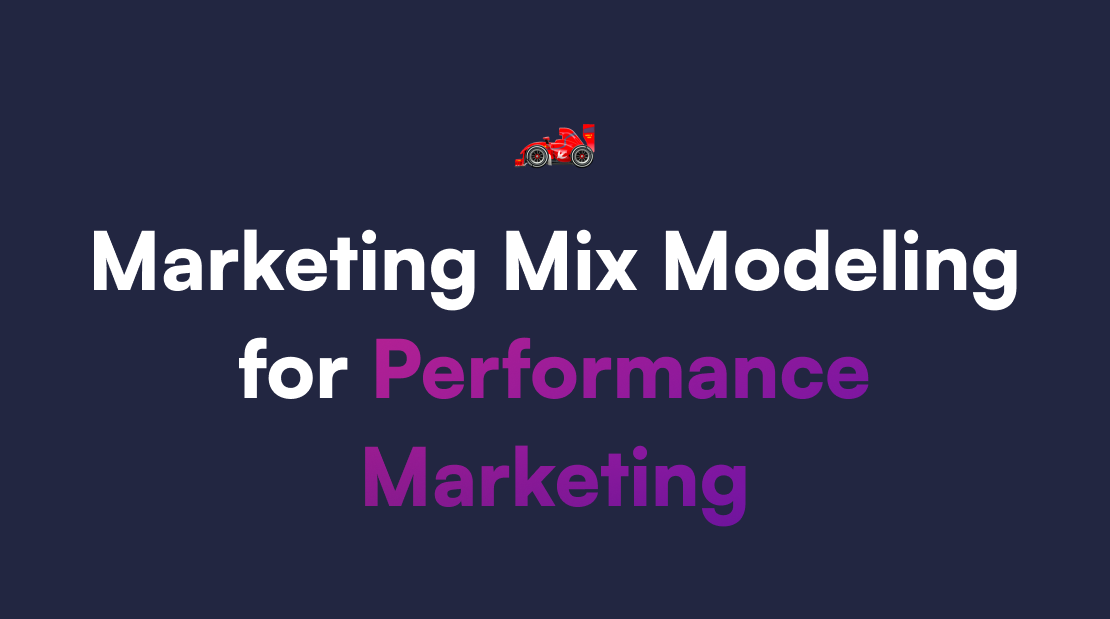
Marketing Mix Modeling for Marketers
Marketing Mix Modeling for Marketers - complete guide for beginners
Hi, this is Gabe, Founder @ Cassandra.
In this article you will have an introduction on Marketing Mix Modeling and how it can be helpful to you in order to create a data driven culture in your marketing unit.

If you are a marketer, you have probably asked yourself at least one of these questions:
Why doesn’t Facebook match Google Analytics?
- Why doesn’t Facebook match Google Analytics?
- How do I measure the long term brand impact of TV?
- How do I measure performance when users don’t want to be tracked anymore?
- If I doubled my marketing budget, what would be my ROI?
- What was the impact of COVID-19 on my business?
These are the questions that Marketing Mix Modeling helps us to answer.
What’s Marketing Mix Modeling?
Marketing Mix Modeling is an analytical methodology that applies statistical techniques to historical marketing data in order to understand the impact that each factor has on our sales.
In other words, they are statistical techniques that help us understand how our sales vary every time there is a variation on how much we spend on Facebook ads or google ads, etc.
Taking a step back, we have two main tracking systems:
- The multitouch attribution is used by the main analytical systems such as Hubspot, Google Analytics
- Marketing Mix Modeling
Marketing Mix Modeling vs. Multi-Touch Attribution
Marketing Mix Modeling, unlike the main analytical systems such as Hubspot or Google Analytics, focuses on the advertising investment and many other factors such as the euro/dollar exchange rate, the day of the week, etc.
So instead of tracking user behavior, it tracks the efficiency of the advertising investment or the effectiveness of a given experiment over time and so on.
Marketing Mix Modeling is a macro and not a micro analysis that allows to find out how to make more efficient investments on advertising.
MMM solves iOS 14 tracking problems
As we know, since the arrival of ios 14.5 it is even more difficult to track the behavior of our users through cookies and therefore many times what happens on google analytics, instead of giving the right attribution maybe to Facebook ads or google ads, they are tracked as direct or none.
That let us understand at a macro level how our business is going, on which one’s channels to spend more and we can statistically measure the ROI of each advertising channel.
How many sales have we actually made with our channels
The Facebook Ads dashboard shows us, for example, that we have a ROAS of 7, while Google Ads tells us that we have a ROAS of 12, but there is a correlation between the two.
For example, people can see our Ads on Facebook and do not buy immediately but only after searching for us on Google the day after, so both channels assign a sale to each other but the CRM only marks a sale.
This macro-level analysis can only be done using statistics and using this model does not serve cookies.
We just need to have the historical data, the number of sales or the past transaction, and the variation in advertising spending.
Measure the actual ROI of your campaign
In this way, we can measure what return on investment we have, then we can make forecasting so we can make future predictions and also help all the part eCommerce, help to do inventory in advance or help the Marketing department decide the right budget for that period.
How does Cassandra work?
To create a real MMM project, you can make a simple project through Excel or Google Spreadsheet, but have a complete project you have to use Neural Networks, Python scripts, and uses some libraries such as Facebook Prophet or Nevergrad.
If you don’t know how to use that you have two options:
- Hire a Data Scientist who already knows all this stuff
- Learn on your own all that you need to do that (it takes several months)
- Try Cassandra For Free, create your MMM in 10 minutes and start optimizing your Marketing ROI






